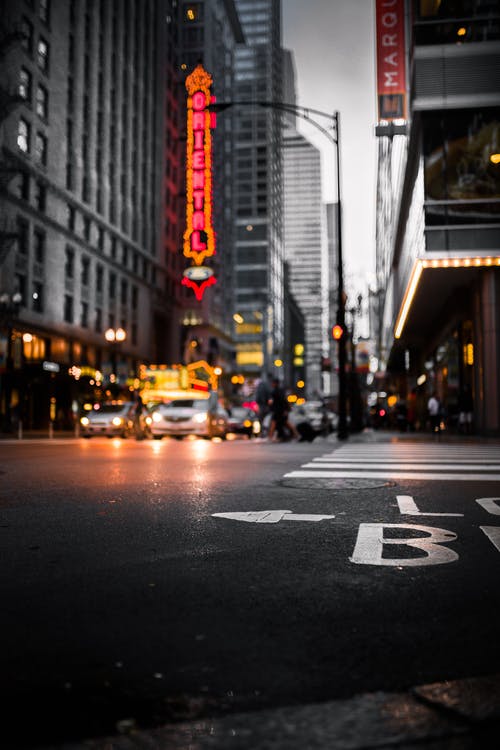By EMIL FRANKEL
At the moment there is much speculation and uncertainty about what America’s major metropolitan regions will look like. As the nation finally emerges from its current public health crisis and the economic hardships that have resulted from the responses to it, questions abound about the future of work, place, and transportation.
One thing is clear: the future of the nation’s major cities is interwoven with the transportation systems that serve them. This is particularly true for the transit networks and providers that make the economies of dense central business districts (CBD) possible As Harvard economist Edward Glaeser has noted, transportation technologies have shaped cities.
In the last 20 or 30 years America’s major metropolitan regions—and their CBDs—have become the engines of the nation’s economic growth. These urban centers are characterized by technological innovation, diversity, and knowledge-based financial and professional services. They are generally the locations of leading health, educational, and cultural institutions.
In 2018, more than half of the U.S. population lived in metropolitan regions of over one million, and just the ten largest have a combined economic output great than every other country on the planet, except China, according to the U.S. Conference of Mayors. The Economist recently noted that workers who live in the nation’s largest metropolitan regions are 50 percent more productive than those who live in smaller metros.
Moreover, the existence of reliable transportation services that provide mobility and accessibility to CBDs have been perquisites for, and closely related to, the transformation of these urban areas and their economic growth and significance. Nicole Gelinas of the Manhattan Institute wrote recently, “Subways, buses and commuter rail make up the physical infrastructure that enables urban life. . . . A big part of what makes cities attractive is street life, which is incompatible with suburban-style car dependency.”
Eight months into the pandemic, the white-collar workforce of major metro CBDs are only a fraction of pre-COVID-19 levels and, importantly, the restaurants, hotels, and retail stores that serve them are operating at much reduced levels. Many have been forced to close permanently. Theaters and other downtown cultural and recreational venues are similarly closed.
Not surprisingly, the transit systems that serve city centers are under severe financial strain in the face of precipitous ridership and revenue declines. The challenge is that CBDs cannot survive without transit, and transit systems cannot survive without riders, unless there are massive and continuing operating subsidies from the general funds of cities or states, themselves facing daunting deficits, or from the federal government.
There are those who believe that major cities will bounce back once there is a vaccine and/or effective treatments for COVID-19, as New York City did after 9/11. However, this time seems different, perhaps because the public health and related economic crises revealed several key trends already in place:
For one, the pandemic has dramatically demonstrated the wide economic inequalities within the nation’s major metropolitan regions and the social isolation of many lower-income communities. Prosperity, opportunity, and access that seem to characterize these urbanized regions are not equitably shared.
We also learned that much office work can be accomplished remotely, especially if you are white and college-educated. Telecommuting and working from home was growing before the pandemic, and many firms have learned through this experience that their need for downtown office space can be reduced, perhaps sharply. This suggests that hotel, restaurant, and retail uses that serve downtown office workers may be overbuilt.
Similarly, escalating costs and limited supplies of housing in urban and close-in suburban areas of major metropolitan regions has already led to the outmigration of people. In places like Boston, New York, Seattle, and San Francisco this means those who cannot, or are unable to work from home, are seeing longer and longer home to work commutes.
And the decline in brick-and-mortar retail and the growth of online shopping has greatly accelerated by the pandemic. In fact, e-tail shopping is so strong, it will more than make up for the drop in traditional business that has a physical store.
All of these land use and economic trends, if maintained, will have significant implications for transportation services (not limited to transit) and should influence transportation capital planning, design, and investment decision-making.
Overall, America’s major or “star” metropolitan regions are likely to remain the drivers of the nation’s economic and population growth and centers of innovation and diversity in a post-pandemic world. However, these major metropolitan regions and the various activities and land uses within them are likely to become more decentralized. That means that metropolitan transportation services and facilities will have to provide the mobility, access, and opportunity in different ways.
Transit services are going to have to become more innovative, flexible, and customer-driven, even as reduced ridership and/or new practices will demand continuing and significant public operating subsidies. Effective, reliable, and available transit must become an essential element in overcoming inequality and isolation for disadvantaged communities and residents of metropolitan regions. To enable those reforms and to enhance service, greater cooperation between the public and private sectors will be required.
Finally, more decentralized metropolitan regions and more remote office uses (whether through greater work-at-home or satellite offices in less dense areas) and concerns about health safety on public transit and commuter rail could well mean an increase in auto-mobility within metropolitan regions. If so, we must be certain that greater use of motor vehicles (including trucking, related to changes in retail and more home deliveries) cannot translate into increased greenhouse gas (GHG) emissions from the transportation sector. A mix of fuel efficiency and emissions regulation and pricing (whether mileage-based fees or carbon taxes) must accompany these changes in metropolitan economies and land uses.
Just as we cannot predict the post-pandemic future of office and related commercial uses, we cannot be certain of the nature of the transportation demands and facilities that will be necessary to enable and support those economic and social changes, and the altered urban growth patterns that are likely to emerge. However, innovation and flexibility will have to be essential characteristics of transportation planners, engineers, and executives, as the nation emerges from its public health and economic crises.
Link: https://www.enotrans.org/article/op-ed-the-future-of-urban-centers-and-transportation/
Source: https://www.enotrans.org
















Leave a Reply